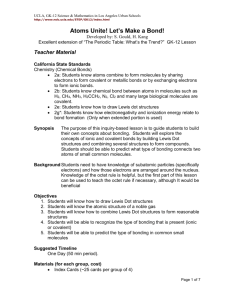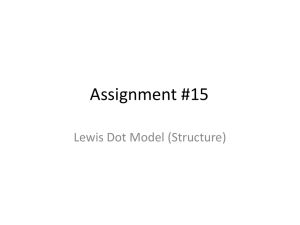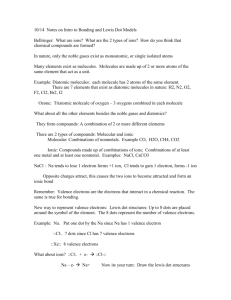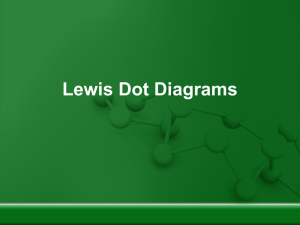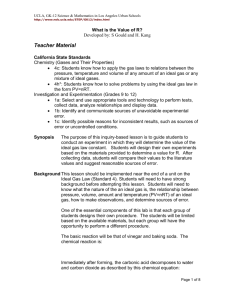Atoms Unite! Let`s Make a Bond!
advertisement
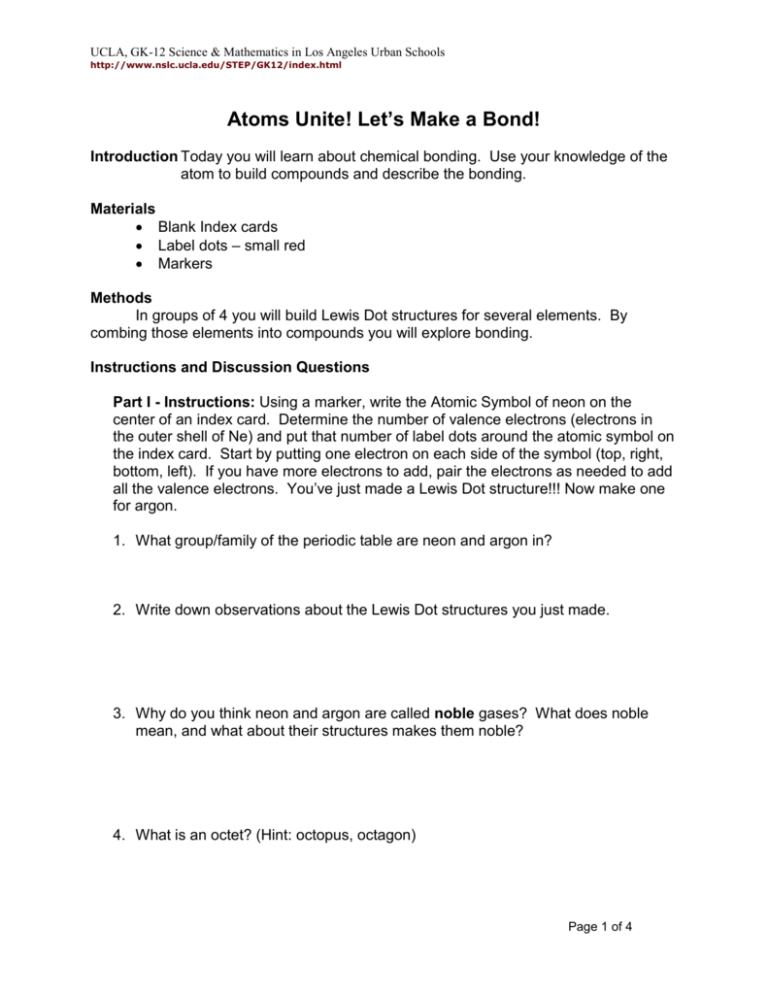
UCLA, GK-12 Science & Mathematics in Los Angeles Urban Schools http://www.nslc.ucla.edu/STEP/GK12/index.html Atoms Unite! Let’s Make a Bond! Introduction Today you will learn about chemical bonding. Use your knowledge of the atom to build compounds and describe the bonding. Materials Blank Index cards Label dots – small red Markers Methods In groups of 4 you will build Lewis Dot structures for several elements. By combing those elements into compounds you will explore bonding. Instructions and Discussion Questions Part I - Instructions: Using a marker, write the Atomic Symbol of neon on the center of an index card. Determine the number of valence electrons (electrons in the outer shell of Ne) and put that number of label dots around the atomic symbol on the index card. Start by putting one electron on each side of the symbol (top, right, bottom, left). If you have more electrons to add, pair the electrons as needed to add all the valence electrons. You’ve just made a Lewis Dot structure!!! Now make one for argon. 1. What group/family of the periodic table are neon and argon in? 2. Write down observations about the Lewis Dot structures you just made. 3. Why do you think neon and argon are called noble gases? What does noble mean, and what about their structures makes them noble? 4. What is an octet? (Hint: octopus, octagon) Page 1 of 4 UCLA, GK-12 Science & Mathematics in Los Angeles Urban Schools http://www.nslc.ucla.edu/STEP/GK12/index.html 5. The Octet Rule requires that atoms in bonded species tend to have noble-gas structures. Define octet rule in your own words. Part II - Build Lewis Dot structures for lithium, beryllium, sodium, magnesium, oxygen, fluorine, sulfur and chlorine. 1. How many compounds (combinations of 2 different atoms) can you make that satisfy the octet rule? List the compounds here. 2. What do you notice about the bonding of your compounds? Write your observations here. Part III: Build Lewis Dot structures for hydrogen, carbon, and nitrogen. You may build as many hydrogen atoms as you need to answer the following questions. 1. How many compounds (combinations of 2 different atoms) can you make? List the compounds here. Page 2 of 4 UCLA, GK-12 Science & Mathematics in Los Angeles Urban Schools http://www.nslc.ucla.edu/STEP/GK12/index.html 2. What do you notice about the bonding of these compounds? Write your observations here. Part IV: Build two chlorine Lewis Dot structures. How could these two chlorine atoms bond? Write your observations here. Part V: Compare the Lewis Dot structures for sodium chloride (NaCl) and dichlorine gas (Cl2). 1. What do you notice about the two different bonds? Write your observations here. 2. Which compound do you think shares electrons? Page 3 of 4 UCLA, GK-12 Science & Mathematics in Los Angeles Urban Schools http://www.nslc.ucla.edu/STEP/GK12/index.html 3. Which element do you think could exchange electrons to form a bond? Part VI: Fill out the following chart Definition Picture Ionic Bonding Covalent Bonding Page 4 of 4
